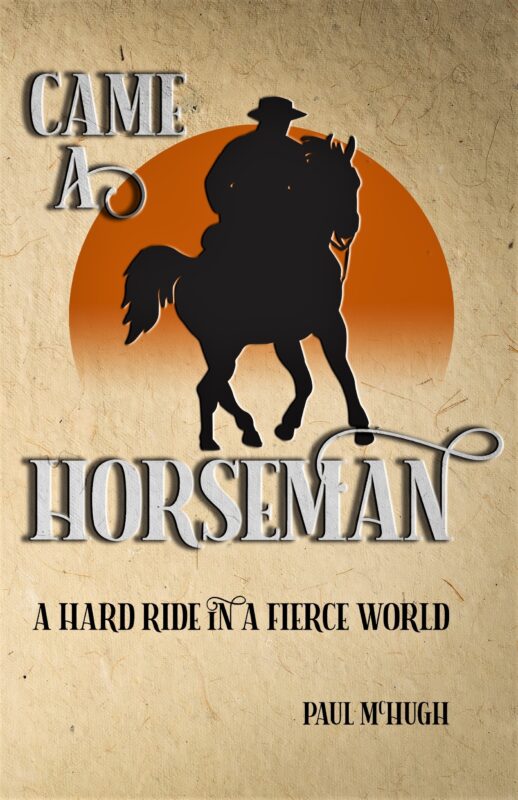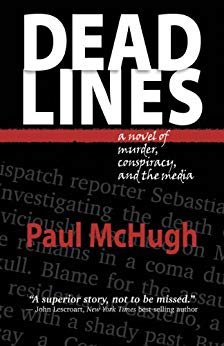Paul McHugh Comments
Call it creative mountaineering. When the Reverend Douglas Smith decided to live as a hermit atop Mt. Shasta to protest the war in Vietnam, it was a stroke that simultaneously brought him closer to fulfillment of his ideals, and much, much higher in the headlines. Smith boldly undertook a physical and spiritual adventure, and I never climb or ski upon Shasta without thinking of that remarkable episode. Interesting side-note: his son, Matt Smith, currently works as a lead investigative reporter for the tabloid SF Weekly, where he carries on his dad’s noble mission of praising the virtuous and smiting heathen.
The Preacher on the Peak
It was the most exalted pulpit in America, and the loneliest. A screaming wind served as both organ and choir. Stained-glass light came in just three colors: a cobalt blue high-altitude sky, the absolute black night that lay behind that blue, and a blinding white shimmer of snow and ice.
For his sermon to get out, the preacher relied on a frail thread of visitors that the mountain’s moods could snap at any time – a procession of the devout shuffling along on crampons through freezing mist as they bore up food, fuel and word of the outside world.
But he kept faith in his core inspiration: no one driving up Interstate 5 could avoid seeing that huge mountain jutting above the horizon. And anyone seeing it couldn’t help but think – if only for an instant – about that lunatic Methodist who’d left his parsonage in the quiet town of Etna to find a more emphatic way of making his point.
On June 11, 1971, the Reverend Douglas Smith, 35, climbed Mount Shasta to protest the Vietnam War. His intention was to live for a year atop the mountain above 14,000 feet – the same length of time that drafted American boys were obliged to endure the maelstrom of violence in Indochina.
Mt. Shasta. Albert Bierstadt. 1800s.
“I’d done demonstrations against the war in Etna – my little town of 700 people – but it wasn’t satisfying,” Smith recalls. “Then one night, gazing into the fire, I saw that Mount Shasta was the dominant symbol of all of Northern California. You couldn’t miss it. And as a dormant volcano, it was a natural peace symbol. It’s got more power than nuclear bombs, yet sits there quite peaceful and beautiful in the hands of the Creator.”
And so it came to pass that Smith and a support team of 16 followers – including local teacher and mountaineer Merwyn Rickey – made their way up to the peak after a night camped in howling winds at Lake Helen, and installed the preacher near the summit plateau.
The site of Smith’s harsh alpine hermitage was just 160 feet below the peak, near an area where volcanic vapors and hot water seeped from fractured Earth – the spot where John Muir had once lain down and turned himself into a human rotisserie in order to survive one night on the mountaintop.
For his longer stay, Smith was much better equipped than Muir. He had a four-season tent, duck-down-filled booties, vest and a sleeping bag with nine inches of loft. All these were hand-sewn from kits by Kathleen Smith, his wife of eight years and the mother of his three children. He had a big supply of dried Mormon survival food and a walkie-talkie radio he didn’t yet realize would not reach all the way down the mountain.
After the tent was dug in, and the support team turned around to leave him there, Smith says, “I felt about as lonely as a human being could feel. I didn’t know if I could go through with it. I did know I’d probably die up there before I went back down.”
Within days, winds too strong to stand against beat his stout tent into a heap of broken poles and ripped nylon. Smith was forced to dig a snow cave for refuge. Sunburn blistered and peeled his face while he tried to figure out ways of protecting every centimeter of skin.
Smith’s lonely demonstration occurred at a time in America when your stand on Vietnam was considered a litmus test of patriotism. And rural Northern California was a notoriously conservative enclave. Parishioners of his church debated fiercely among themselves about what their minister was doing. Partisans and opponents waged epistolary battles in the editorial pages of local papers.
One stinging message that reached him from the valley floor was word of a resolution by businessmen of the Mount Shasta Chamber of Commerce. It recommended that – should Smith get into trouble up there – the county should not spend a dime of public funds trying to rescue him. Up on the peak, his main concern had to be the daily needs of simple survival. When hard winds blew daggers of ice horizontally through the air, he spent long days in sleep. When at last he could move outside, it was a welcome relief from the cramped snow cave with its damp, dripping walls. Acids in the volcanic vapors dissolved the stitching in his clothing; much time was spent sewing things back together, and he had to wonder what those vapors were doing to his lungs.
Unfortunately, the Mormon dried food did not reconstitute well at high altitude. Fortunately, the parade of visitors and supporters would swell through the summer, when the weather was good. With them came fresh food, high-calorie snacks and even the blessing of an occasional beer.
And with them came an opportunity to explain himself.
“I am a patriot,” Smith said. “And I love my country. But I do not love what we are doing in Vietnam. The war is a malignancy. It’s eating people up, ours as well as theirs. We are a democracy, and in straits like this every citizen must maximize his or her voice, which is why I’m up here talking about this.”
Not all visitors to the peak that summer were receptive to the reasons behind Smith’s high-altitude hermitage. Some radiated hostility, especially a young man who showed up with a pair of long-barreled revolvers strapped to his body.
“I felt really lucky there were other people around that day,” Smith relates. “There was no overt indication he wanted to create problems, yet why else climb up a mountain wearing six pounds of weapons?”
With Smith’s increasing notoriety came national media attention: wire stories by UPI and the Associated Press – even mention on Paul Harvey’s syndicated radio show. And in the classic 20th century feedback loop, media attention meant more visitation, which meant more attention.
In several cases, his visitors were poorly prepared for the mountain, and Smith had to jeopardize his own life in order to ensure their survival.
But not all aspects of life on the mountain were grim. There was the matter of his humorous turf battle with the pine marten. This clever, house cat-sized member of the weasel family had a scam going. He’d found a steam-heated pile of rocks for a house, and a year-round food supply in plastic sacks of garbage buried by climbers on the mountaintop.
When Smith’s snow cave began to suffer meltdown in July, he followed the pine marten’s lead and built a rock hut in that same heap of volcanic talus. This usurpation of prime space was more than the short-tempered beast could bear.
“Afterwards, when I was out, he’d come and rip open my chocolate and powdered milk, and scatter it all over the hut,” Smith said. “He also had a bad habit of excreting right in my doorway. I think he was trying to tell me something.”
When the wind and other forces of nature quieted down, Smith could actually envision the peak as a rather healthy place. “The germ count was zero, and there was no pollen to aggravate my asthma. The water I drank was pure, boiled snow, and all my rigorous exercise meant I was really burning off calories. I dropped 35 pounds of unnecessary weight up there. After a month, I could just run around like a goat.
“I began to see that I might not be in such great jeopardy, as long as I stayed real careful.”
And there came moments when Shasta and the surrounding land and sky were suffused with a transfiguring beauty. “There were incredible sunrises and sunsets,” Smith recalls. “It was marvelous to see the shadow of the mountain cast out into infinity, just like it was shooting straight off the edge of the Earth.”
But there were also nights of terror, when he would awaken in a sweat that the volcano was about to explode under him; or ice and snow were about to surround, seal and suffocate him.
And the sense of social and sensual deprivation became overwhelming.
“After a while, you just can’t stand that harsh, sterile white any longer,” Smith said. “You just get kind of rummy from it.”
Despite traditions of wilderness theophanies – Moses and the Burning Bush, or Jesus’ 40-day fast in the desert – Smith says, “There really is no way to manipulate God. He wasn’t closer to me on that mountain than he is to you in the city. It’s not right to think, “I’ve come all the way up here, now God is obliged to reveal himself more clearly.’ A person in a slum or a prison should have exactly the same access.
“In fact, on clear days, when I would look down on the cities, and the patchwork pattern of all the farms, a feeling swept over me that I really wanted to be down among those people, working there. I wanted to be home. I was only up on the mountain to try to stop the killing.”
Several summer thunderstorms raged over the peak, giving Smith and his supporters a taste of the nightmare they’d face in trying to keep the lifeline of hikers intact through winter. The prospect was formidable: Weeks could pass without being able to make any contact.
Though a hardened cadre of supporters remained committed, their numbers steadily waned.
In September, Merwyn Rickey, his face lined with fatigue from six Shasta climbs in as many weeks, arrived with a handful of letters from supporters asking the preacher to abandon his protest. He found Smith hard at work building a foundation for a new plywood hut, in which they had theorized he might be able to survive the winter.
“I was of two minds,” Smith recalls. “Part of me said, bulls – – -, I’m not going to stop just because others are giving up. But another part of me was willing to seize any excuse to come down. What helped me decide was that in winter the hikers would be in the greatest danger, not me. I’d be safely bivouacked-in at the top, while they’d be fully exposed. That made a clean argument for coming off. But the bottom line was – I really couldn’t handle the social and sensual deprivation anymore.”
After three continuous months in the sterile realm of high alpine light, Smith abandoned his lofty hermitage.
“Coming into the green areas below tree line was incredible. I had to stop every 10 feet to admire blossoms and ferns. Every little mossy rock seemed like a magnificent thing. “And when I got down to the buildings of the old ski area, I was reunited with my wife and kids. I had missed them desperately. The television cameras were ready to intrude on our reunion, of course.”
Reporters asked if Smith felt he was losing face by abandoning his vigil. Not at all, he stoutly replied. “The United States can do the same thing about getting out of Vietnam.”
The truth was, as soon as he came down he began to feel that he had made a mistake. New mountaineers stepped forward, ready to take up slack in his support crew; and the winter of 1971-72 went on to develop as one of Shasta’s mildest in a decade.
Yet the momentum of his commitment continued to play out anyway. Smith went on to Washington, D.C., to lobby against the war. News of his exploit immediately connected him to the Quaker peace movement, and provided some entree to congressional offices.
Siskiyou County
Finally back in Siskiyou County, Smith moved into a tiny, rustic dome with his wife and kids, and began supporting himself with odd jobs as a carpenter. It was a year and a half before he felt able to involve himself again with the regular affairs of the Methodist church.
These days Smith can be found at his church in Knights Landing in Yolo County or tending the homeless at a shelter in Sacramento. He did little mountaineering before Shasta, and has done none since then. He’s surprised sometimes that others still remember his vigil on the mountain. Memorabilia of the time are scant: a dog-eared cardboard file full of notes, some yellowing photographs, a packet of letters tied with string.
But some of his personal memories are crystal-bright.
“Sometime after I came down, I got stopped by a highway patrolman in Yreka for a missing taillight. After he found out who I was, he frankly told me that, during the days of my protest, if he’d gotten me in the sights of a scoped rifle with no one around, he probably would’ve shot me.
“He didn’t agree with what I was saying, at all. But he’d read everything he could on what I was doing and why. He felt I was serious, and after I came down he admired what I’d done.
“And I thought, the mountain was perfect for that. Being able to use it as a magnified way of addressing people – that’s the stuff of dreams.”










